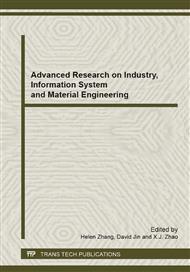p.341
p.346
p.350
p.354
p.358
p.365
p.370
p.374
p.379
Study on Combustible Materials with the Application Study of Curve Fitting in the Pool Fire Risk Assessment
Abstract:
The pool fire accident of chemical companies is of long time- burning, destructive, and therefore it is of great significance for the combustion characteristics of pool fire. The author has studied the combustion materials for the significance of pool fire. At the same time,this paper chooses the dichloropropane storage tank area of a company in Tianjin as the research object based on the basic theory of the pool fire and combustion materials, and builds the risk assessment model of pool fire in the fire embankment based on combustion materials. Using the regression analysis, the optimal curve equation for the target, the distance of which is X from the pool center under the condition of the given radiation is fitted and calculated to be the power function y = 49310x-2.484. Then according to the determination foundation, analyze the affect scope and extent of the fire based on combustion materials. The results show that: after the fire broke out because of the leak of the tank in the fire embankment, death and completely damage of equipment and buildings will occur to the nearby production unit; the passers-by with the passing vehicles, filling vehicles and abandoned buildings on both sides of the plant roads and abandoned buildings will suffer strong impact.
Info:
Periodical:
Pages:
358-364
Citation:
Online since:
March 2013
Authors:
Price:
Сopyright:
© 2013 Trans Tech Publications Ltd. All Rights Reserved
Share:
Citation:


